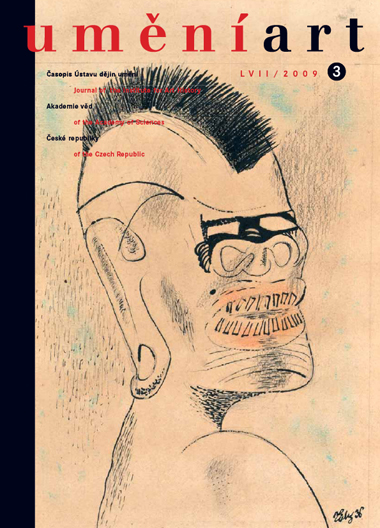Tomáš Winter
Cannibals in Bohemia
White Blacks, painted in early 1936, is one of František Tichý's most monumental works. The painting is the final variant of a series of works on what was a long-standing theme for the artist. The article maps out the origin and context of the work and looks for the sources that inspired it. It identifies a direct literary model for the painting in Robinson Crusoe, the celebrated novel by Daniel Defoe. Tichý's painting, and especially a related drawing of a head of a black man, are entirely consistent with the character of the savages featured in the book. They regularly engage in ritual cannibalism. The subject of cannibalism reinforces the thematic power of White Blacks and situates the work in the wider context of the current of modern primitivism in European art that turned to the indigenous cultures of the Americas, Africa and Oceania. Cannibalism as an ideological stereotype played a highly specific role in the primitivist discourse. It is one of the nodal points that bind the dynamically modelled network of opinions and attitudes characteristic of primitivism. The discussion on cannibalism is where the key ambivalence is formed between what is 'ours' and what is 'other'. Although the Czech Lands had no overseas colonies, we can trace the same discussion in local written material, both in translated foreign works and in texts written by Czech authors. The study focuses specifically on the works published in the Czech language where the cannibalism of the so-called primitive cultures is vividly conveyed, and encompasses works from the early sixteenth to the very end of the nineteenth century. Special attention is given to travel journals. Alongside works by foreign authors, it presents primarily works by Enrique Stanko Vráz, Čeněk Paclt and Josef Kořenský. František Tichý's painting White Blacks in a certain sense represents a closure of this entire discourse.
Full-text in the Digital Library of the Czech Academy of Sciences:
https://kramerius.lib.cas.cz/uuid/uuid:ed366135-1399-6951-2d01-da1c4e2cfed4
< back

